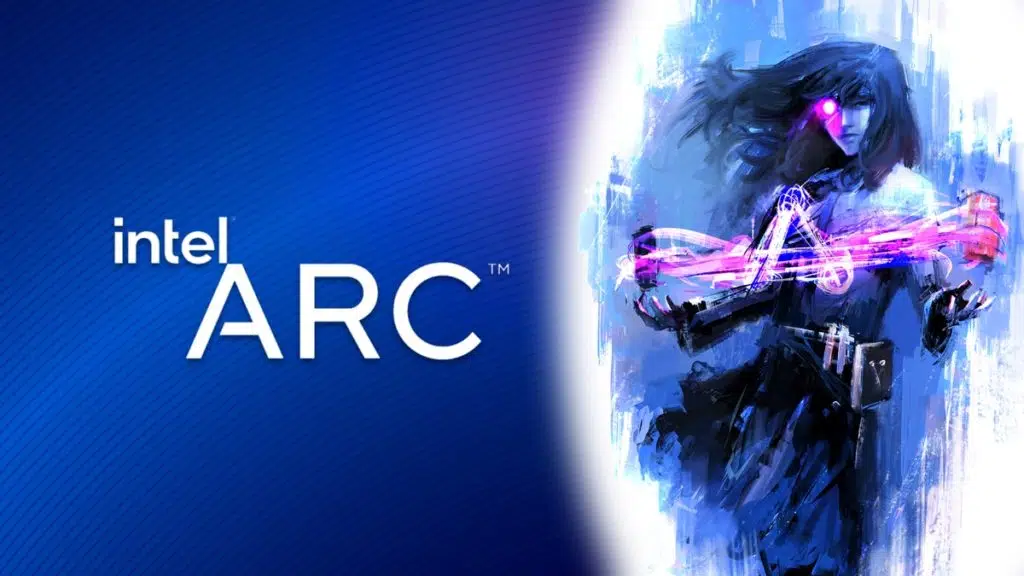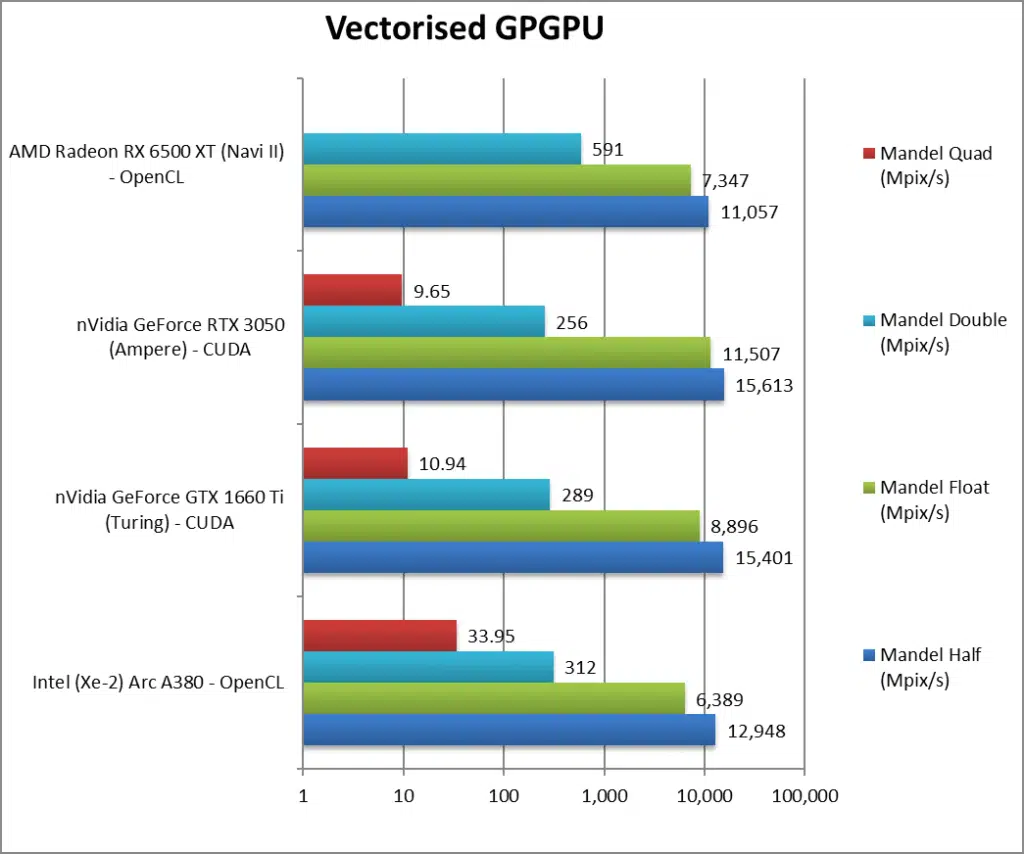
SiSoftware has shared some of the first OpenCL benchmarks for Intel’s upcoming Arc “Alchemist” A380 GPU, demonstrating its computing performance in a range of tests that compare it against some of NVIDIA and AMD’s alternatives. The verdict seems to be that the GPU isn’t all too exciting against the likes of already-available options such as the Radeon 6500 XT and GeForce RTX 3050, but there’s still some interesting tidbits in there for prospective adopters, such as what appears to be the full specifications for the entire Arc Alchemist family. The flagship Alchemist series is speculated to carry the A700 designation and feature 512 Execution Units, 4,096 shaders, and 16 GB of memory, per SiSoftware:
- Up to 512CU / 4,096 SP
- A300? series 128CU / 1,024SP
- A500? series 384CU / 3,072SP
- A700? series 512CU / 4,096SP
- Up to 16GB GDDR6
- A300? series 6GB GDDR6 96-bit 14Gbit/s ~192GB/s
- A500? series 12GB GDDR6 192-bit 16Gbit/s ~384GB/s
- A700? series 16GB GDDR6 256-bit 16Gbit/s ~512GB/s
- 7nm TSMC process
- OpenCL 3.0, DirectX 12 Ultimate support
- FP16 half-floating point support
- NO FP64 double floating-point support (!)
- Tensors (“Matrix Engines” aka XMX) for Deep Learning
- FP16 and Int8 support (but no FP32/FP64 support)
- OpenCL extension – will need to be coded specifically to use it
Intel ARC (“Alchemist”) A380 GP-GPU Graphics – OpenCL Performance (SiSoftware)

- nVidia has nothing to worry about – here we’ve only tested the low-end – and despite being more expensive it is definitely worth it. CUDA performance is the most consistent and even the “old” Turing has no problem dispatching both Intel ARC and AMD “Navi II” competition. Again, OpenCL support still leaves a lot to be desired (both Intel and AMD) and DirectX is really for games, not optimised for compute. Still, the A380 is competitive and should improve with drivers and optimisations – should Intel decide to support ISVs like ourselves – but your 2nd choice should be AMD as Navi has been around much longer and the drivers are mature.
- As with integrated graphics versions, we lack FP64 support though at this (entry) level it does not matter – though for the top-end (Xe-HP) lack of it would be quite disastrous. Fortunately, nVidia has hobbled its consumer cards’ FP64 at 1/64x rate which makes it pretty much unusable… AMD is still your choice here if you don’t have the money (who does these days?) and need FP64 native support.
- Tensor (matrix multiplier) support should improve performance (GEMM, CNN/RNN neural-networks, image processing) – but is limited to FP16/Int8 and won’t help standard FP32 performance. We will likely have to wait for updated tensors in future versions – just as nVidia has done with “Ampere”.
- Perhaps it was too much to expect a nVidia/AMD killer – but all in all it is a decent effort. YMMV (Your Mileage May Vary).
